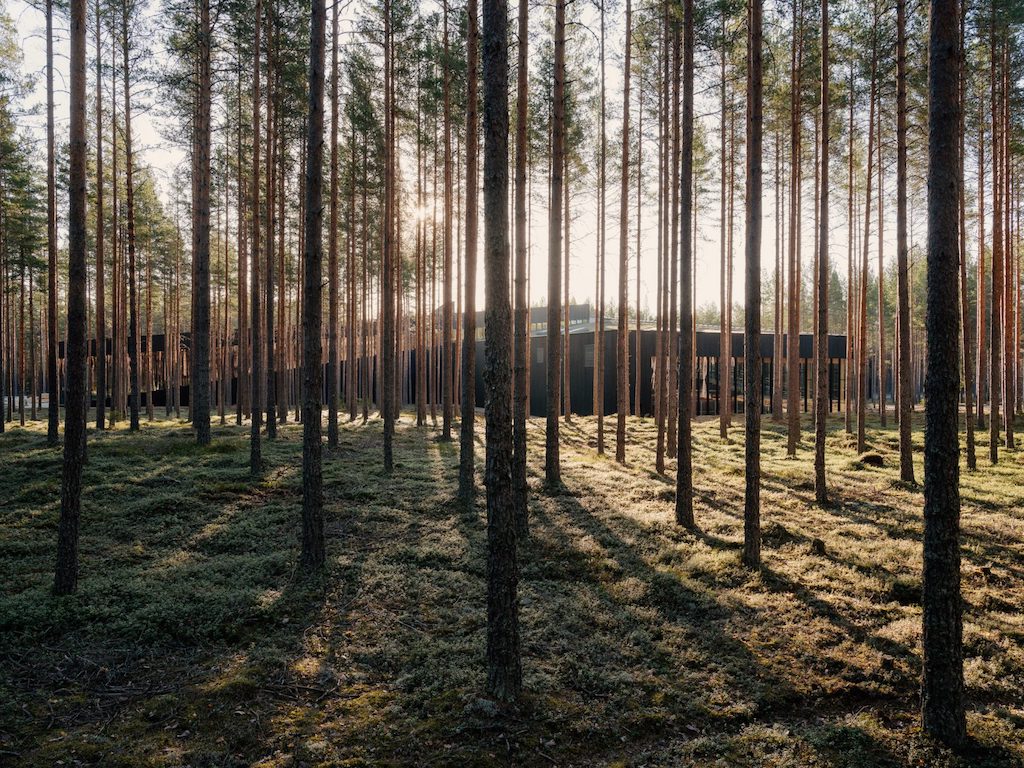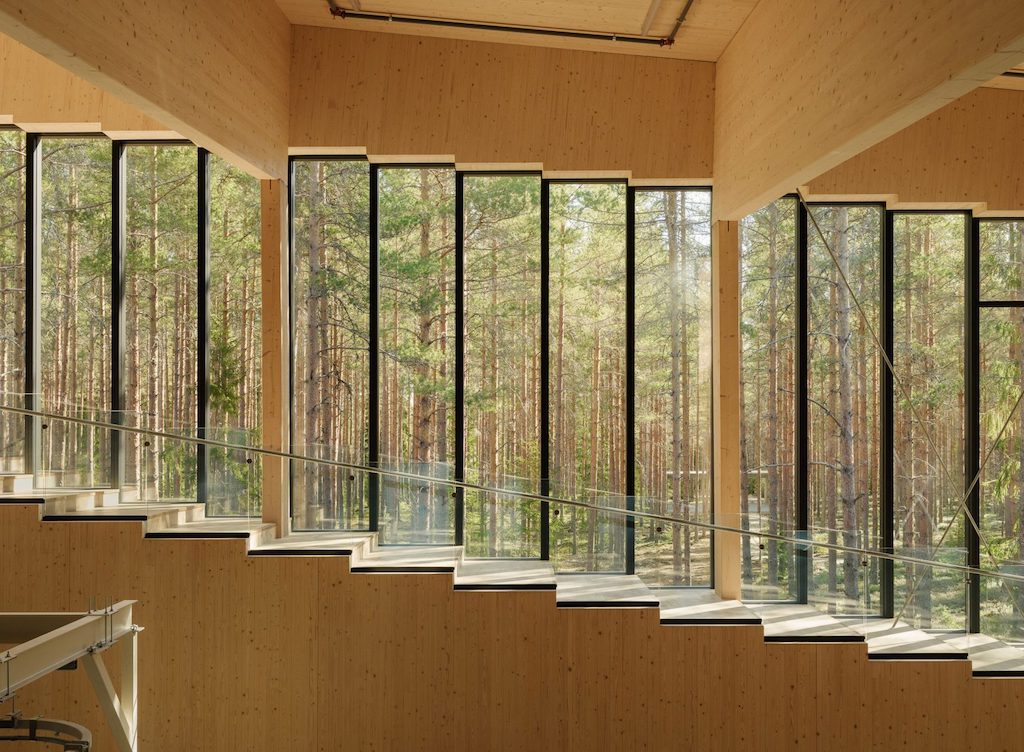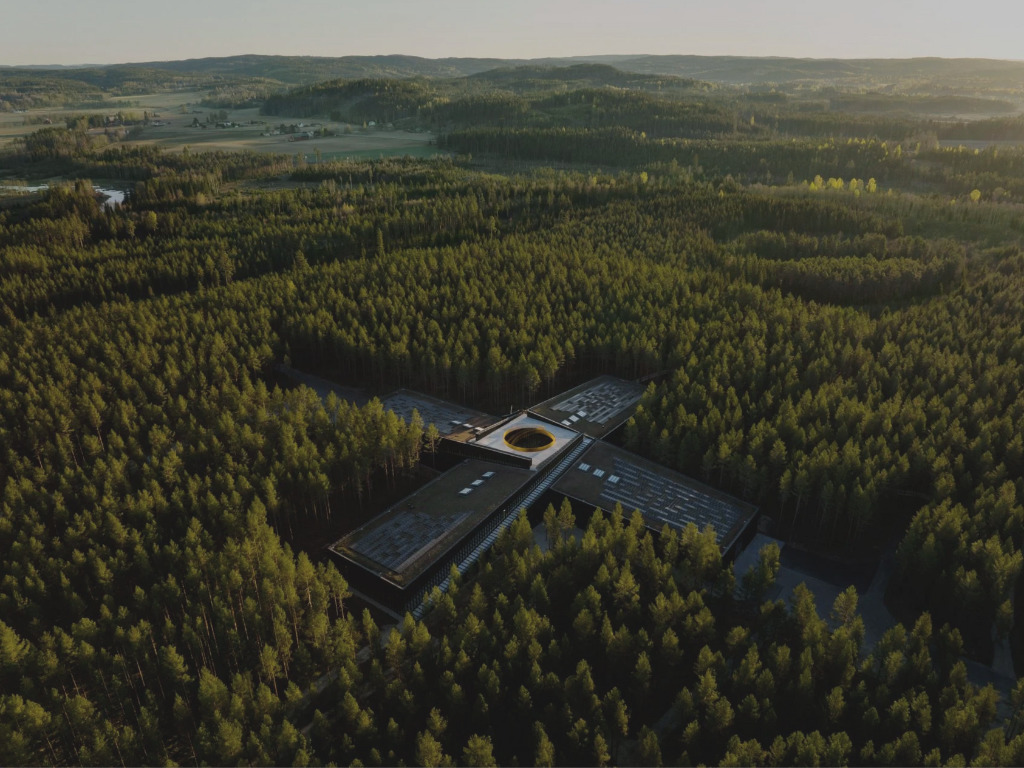3 Mins Read
Calling it the most sustainable factory of its kind in the world, the outdoor furniture manufacturer Vestre has opened the doors to its $30 million Magnor, Norway facility.
While Sweden’s Ikea gets most of the glory when it comes to sustainability, outdoor furniture manufacturer Vestre is giving the giant a run for its money. Designed by Danish architectural firm Bjarke Ingels Group (BIG), Vestre’s new factory is centered inside a 300-acre area of woodland near the village Magnor, close to the Swedish border. The plus-shaped design began 18 months ago with sustainability at the core of the design.
The factory design
“Playfulness, democracy, and sustainability are at the heart of the Vestre brand and everything they do; our wooden, colourful factory in the middle of the Norwegian woods – surrounded by a public forest park where the local community can come to experience the gigantic Vestre furniture pieces sprinkled throughout – lives and breathes this philosophy,” David Zahle, Partner at BIG, said in a statement.
“There are no industrial buildings that have even come close to the highest standard, not even the second-highest,” BIG design lead Viktoria Millentrup told Dezeen. “So BREEAM-wise, there was not even an example building we could follow.”

“It’s untraditional for a factory to focus so much on sustainability,” Zahle said. “For a lot of companies, production is about keeping costs low and hiding it away.”
While the factory was built inside a forest, it’s not at the expense of trees.
“Normally, when we construct a building in the middle of the forest, we would take a lot more trees away,” said the project’s design manager Sindre Myrlund.
“Originally, we drew a line 10 metres away from the factory, which is more normal. And Vestre moved the line five metres in and said: ‘if you need to remove more trees, you need to ask and get it approved’.”
The factory ‘wings’ that extend out from the center all focus on different areas of the business: there’s the Color Factory, the Wood Factory, assembly, and the warehouse. The wings all meet at a central courtyard. The design embraces Norwegian culture’s Allemannsretten—the “right to roam” concept, so there are no fences or borders, the company says.
Sustainability at Vestre
The factory uses renewable energy, water recovery and purification, among other sustainability metrics. This reduces energy consumption by 60 percent and reduces emissions by 55 percent. The rooftop is covered in local vegetation as well as 900 solar panels. The property also includes 17 geothermal wells, and heat pumps in the walls to capture excess heat.
The 7,000 square-meter factory was constructed mainly of wood—PEFC-certified cross-laminated timber and glued-laminated timber. Its structure stores 1,400 tons of CO2, the company said.
The building also relies on the energy-efficient Passivhaus strategies as well as robotic production lines that help to reduce its energy use by 90 percent compared with conventional factory lines.

“The Plus is a factory for the people,” Stefan Tjust, Vestre’s CEO, said. “It is a project we have put an enormous amount of soul and energy into. This is an important day for us, but also for the Norwegian mainland industry and the Scandinavian export cooperation.”
The structure is also home to Norway’s tallest slide—yes, slide—that winds down the side of the building down to the forest floor.
Zahle says the project is “very transparent,” citing it as “almost open-source” about how the products are made and the open facade “to bring people closer,” he said.
“You invite people to play and you invite people to walk up on the roof and you create a park around it so that even a factory can become part of creating a good life.”
Images: courtesy



